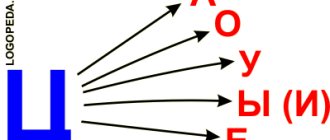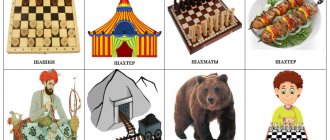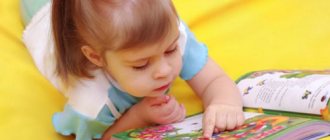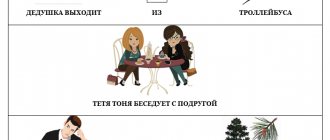BASIC CONCEPTS OF AUTOMATION OF TECHNOLOGICAL PROCESSES. - presentation
BASIC CONCEPTS OF AUTOMATION OF TECHNOLOGICAL PROCESSES
Basic levels of production automation Depending on the volume of tasks to be solved, production automation is divided into three levels: partial, complex and complete production automation. Partial automation involves the automation of individual production processes, devices, and equipment elements. Complex automation is carried out at a site, in a department, in a workshop, which function as a single interconnected automated complex, i.e. with the participation of people. Full automation is the highest level of automation, which involves the transfer of all production management and control functions to automatic control systems. 1
Main types of automation 1. Automatic control 2. Automatic protection 3. Remote and automatic control 4. Telemechanical control Includes: - Automatic alarm; — Automatic measurement; — Automatic sorting and collection of information It is a set of technical means that, when abnormal or emergency conditions occur, either stop the controlled process or automatically eliminate abnormal conditions. Combines methods and technical means of controlling installations and various objects at a distance. Allows you to combine into one TP the work of a large number of machines and installations located at a considerable distance from one another. 2
Automatic control - Automatic alarm is designed to notify operating personnel about limiting or emergency values of any physical parameters of the technological process (Lamps, bells, sirens, special signs and other light and sound devices are used as signaling devices); — Automatic measurement is used to measure and transmit to special indicating or recording devices the values of physical quantities characterizing technological processes or the operation of machines. — Automatic sorting is designed to control and separate products by size, weight, hardness, viscosity and other indicators; — Automatic collection of information is used to obtain information and for further processing, storage and delivery of information to service personnel. 3
Automatic protection It includes automatic blocking devices, a control object and automatic regulators. Automatic blocking devices are designed to prevent incorrect switching on and off and erroneous actions of maintenance personnel; A control object or controlled object is a set of elements in which technological processes are subject to targeted influences. Automatic regulators perform the function of automatically maintaining any parameters in an object at a given level or changing them according to a certain law 4
Methods of measurement during automation Comparison of measured quantities with units is carried out in various ways: direct, indirect and cumulative. — Direct measurements are carried out directly by the reading device of the measuring device. For example, measuring pressure with a spring pressure gauge, mass on a dial scale. — Indirect measurements are those in which the value of the measured quantity is determined from the results of direct measurements of one or several quantities related to the desired quantity by a certain dependence - a formula. — Cumulative measurements are those in which the numerical values of the measured quantity are determined by solving a series of equations obtained as a result of direct measurements of one or more homogeneous quantities. For example, determining the temperature coefficient 5
Automation control and measuring instruments Control and measuring instruments are classified: by the type of quantity being measured, methods of obtaining information, metrological purpose, location. Depending on the type of quantity being measured, devices for measuring temperature, pressure, quantity and flow, level, composition, and state of matter are distinguished. According to the method of obtaining information, devices are divided into indicating, recording, signaling, comparing, and regulating. According to their metrological purpose, devices are divided into working, exemplary and reference. Based on location, local and remote devices are distinguished. 6
Unification of input and output signals of devices DC signal 0…5; 5…0…5; 0…20 mA 7 DC voltage signal 0…1; 1…0…1; 0…10; 10…0…10 V AC voltage signal with a frequency of 50 and 400 Hz 0…0.25; 0…0.5; 0…1; 0…2 V Pneumatic signal with pressure change limits 0.02…0.1 MPa
Classification and types of measuring transducers and devices By type of controlled parameter (pressure, temperature, speed, etc.) 8 By the physical nature of the signal being converted (medium temperature into an electrical impulse, mechanical action, etc.) AC voltage signal with frequency 50 and 400 Hz 0…0.25; 0…0.5; 0…1; 0…2 V Pneumatic signal with pressure change limits 0.02…0.1 MPa Main types of automatic regulator measuring device
Unification of device signals DC signal 0…5; 5…0…5; 0…20 mA 9 DC voltage signal 0…1; 1…0…1; 0…10; 10…0…10 V AC voltage signal with a frequency of 50 and 400 Hz 0…0.25; 0…0.5; 0…1; 0…2 V Pneumatic signal with pressure change limits 0.02…0.1 MPa
Classification of automatic control systems According to the nature of the use of information Open-loop systems With a rigid program With control by disturbance Closed-loop systems Use current information about output quantities, determine the deviation of the controlled quantity from its specified value and take actions to reduce or completely eliminate it Control is carried out on the basis of information about input ( disturbing ) influences 10
Classification of automatic control systems By control method Unsuitable - merging Stabilizing Software Adaptable curly servo 11
By change in impact over time Intermittent (discrete) Relay Pulse Continuous Digital Classification of automatic control systems 12
Classification of automatic control systems Based on the results of operation in a steady state Static Astatic 13
Classification of automatic control systems According to the number of controlled quantities One-dimensional Multidimensional 14
Classification of automatic control systems By type of differential equation Linear Nonlinear 15
Thank you for your attention !!!
Presentation “Automation of modern production”
Slide 1
Completed by: Yasko Lev Municipal Educational Institution “Secondary School No. 9 of Nadym” AUTOMATION IN MODERN PRODUCTION
Slide 2
Automation is one of the main directions of scientific and technological progress and an important means of increasing the efficiency of social production. Modern industrial production is characterized by large scale and complication of technological processes, an increase in the unit capacity of individual units and installations, the use of intensive, high-speed modes, increased requirements for product quality, personnel safety, safety of equipment and the environment. The cost-effective, reliable and safe operation of complex industrial facilities can be ensured using only the most advanced principles and technical controls.
Slide 3
Modern trends in production automation are: the widespread use of computers for control, the creation of machines and equipment with built-in microprocessor means, control and regulation measurements, the transition to centralized control structures with microcomputers, the use of highly reliable technical means, automated design of control systems. One of the most important tasks is the widespread introduction of automated and automatic process control systems in non-ferrous metallurgy.
Slide 4
Automation of processes allows solutions to be both social; as well as technical and economic problems. Many years of experience in operating control systems at metallurgical enterprises have shown that automation makes it possible to increase the productivity of metallurgical units as a result of stabilizing their operating modes; increase the yield of finished products due to more precise control of the technological process; reduce the consumption of raw materials, fuel materials, energy per unit of production, increase labor productivity.
Slide 5
Automation, with the exception of the simplest cases, requires an integrated, systematic approach to solving a problem. Automation systems include sensors, input devices, control devices (controllers), actuators, output devices, and computers. The computational methods used sometimes copy the nervous and mental functions of humans. This entire set of tools is usually called systems.
Slide 6
The following elements of equipment automation are distinguished: 1. Numerical program control - the structure of automation and control of drives of machine tools and other technical devices. Such a system appeared in the middle of the last century, but CNC became widespread only recently, with the active introduction of microprocessors.
Slide 7
2. Production robots. The first use of robots in industry occurred in the 60s. XX century. Since then, robots have been actively used in various production processes.
Slide 8
3. Mobile production devices - designed for changing tools and processed metal parts. Typically, such actions are performed by robots under computer control. Tool shop
Slide 9
4. Automated warehouse devices - special mobile lifts that, on command, can move objects into or remove them from the warehouse. .
Slide 10
5. Quality control devices. Such systems are designed to check the quality of certain metal products. Certain characteristics of the objects being tested are compared with reference parameters, and the percentage of compliance with specified standards (percentage of quality) is determined. This check is carried out by the computers themselves or by automated equipment controlled by these computers.
Slide 11
6. Computer-aided design programs and devices are used by developers and administrators in the process of modeling products or creating technical documentation.
Slide 12
Automated planning Consists of linking individual elements of the plan. This linking is carried out according to the following principles: • Qualitative homogeneity of the measured objects • Homogeneous communication channels between them • Compatibility of connections.
Slide 13
The largest direction in the field of equipment automation is the creation of machine tools with numerical control (CNC). Such machines are designed for processing metals, sheet metal, pressure processing of materials, and, less commonly, for processing wood and plastics. Modern roll forming equipment is often equipped with a numerical control system.
Slide 14
Automation of a technological process is a set of methods and means designed to implement a system or systems that allow the control of the technological process itself without direct human participation, or leaving the right to make the most responsible decisions to a person. Computerization is the widespread introduction of electronic computers into various spheres of human activity (for example, for managing technological processes, transport, production). Automation of the programming process is the removal of humans from the process of writing program code, either completely or partially. Achieved by: 1) Development of tools for formulating and setting a task from a person to a machine (human-machine language). 2) Presentation of the means of this tool in terms of the area of specialization of the human operator. 3) development of an input data analyzer and generation of final code in a machine-level language. 4) Integration of accounting and error correction systems (AI systems). Production automation is a process in the development of machine production in which management and control functions previously performed by humans are transferred to instruments and automatic devices.
Slide 15
SOURCES: Great Soviet Encyclopedia Wikipedia - free encyclopedia Internet resources: Google.ru











